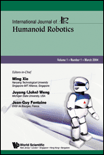
International Journal of Humanoid Robotics
Scope & Guideline
Exploring the Intersection of Humanity and Machines
Introduction
Aims and Scopes
- Humanoid Robot Design and Control:
Research in this area encompasses the development and optimization of humanoid robots, focusing on the design of their mechanical structures, control algorithms, and actuation systems to achieve human-like movements and functionalities. - Cognitive and Learning Mechanisms:
This scope involves exploring cognitive architectures and learning algorithms that enable humanoid robots to acquire new skills and adapt to dynamic environments, including imitation learning, reinforcement learning, and cognitive developmental robotics. - Human-Robot Interaction (HRI):
The journal emphasizes the importance of effective human-robot communication and interaction, studying how humanoid robots can understand and respond to human emotions, commands, and social cues. - Perception and Sensing Technologies:
Research in this area focuses on enhancing the sensory capabilities of humanoid robots, including vision, touch, and auditory perception, to improve their interaction with the environment and humans. - Applications in Healthcare and Social Robotics:
The journal publishes studies on the deployment of humanoid robots in healthcare settings and for social assistance, addressing both the technological and ethical implications of these applications.
Trending and Emerging
- Advanced Learning Algorithms:
There is a growing interest in sophisticated learning techniques, including deep learning and reinforcement learning, that enable humanoid robots to learn from their environment and improve their performance over time. - Socially Assistive Robotics:
The trend towards deploying robots in social contexts, particularly in healthcare and education, is gaining momentum. Researchers are exploring how humanoid robots can assist individuals with disabilities, enhance learning experiences, and provide companionship. - Cognitive Robotics and Decision-Making:
Emerging research is increasingly focused on cognitive robotics, where humanoid robots are equipped with decision-making capabilities that allow them to operate autonomously in complex environments, making them more effective in real-world applications. - Integration of AI and Robotics:
The intersection of artificial intelligence and robotics is a prominent theme, with a focus on how AI can enhance robotic perception, learning, and interaction capabilities, leading to more intelligent and adaptable humanoid systems. - Human-Centered Design and Ethics in Robotics:
As humanoid robots become more integrated into society, there is an increasing emphasis on human-centered design principles and ethical considerations, ensuring that these technologies are developed with user needs and societal impacts in mind.
Declining or Waning
- Basic Mechanical Engineering Principles:
While foundational mechanical engineering principles remain relevant, there has been a noticeable decline in papers focusing solely on traditional mechanical design aspects, as the field shifts towards more integrated and sophisticated approaches to humanoid robotics. - Static Gait Analysis:
Research focused exclusively on static gait analysis has decreased, possibly due to advancements in dynamic and adaptive gait control methods that better reflect real-world scenarios and the need for robots to navigate complex environments. - Simple Task Automation:
There has been a reduction in studies centered around simple task automation, as the focus has shifted towards more complex, adaptive behaviors and learning mechanisms that enable robots to perform a wider variety of tasks in unpredictable environments.
Similar Journals
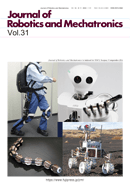
Journal of Robotics and Mechatronics
Exploring New Frontiers in Mechanical SystemsJournal of Robotics and Mechatronics, published by FUJI TECHNOLOGY PRESS LTD, stands at the forefront of innovation in the fields of robotics and mechatronics. Since its inception in 1989, this Open Access journal has become a vital resource for researchers, professionals, and students interested in advances that merge technology with mechanical systems, offering critical insights into practical applications and theoretical developments. With a commendable impact factor reflected in its Q2 rankings in both Computer Science (miscellaneous) and Electrical and Electronic Engineering, the journal serves as a platform for disseminating high-quality research and fostering academic collaborations. The journal enjoys wide accessibility since transitioning to Open Access in 2007, allowing for a global audience to engage with groundbreaking findings relevant to both industry and academia. Based in Tokyo, Japan, the Journal of Robotics and Mechatronics aspires to bridge the gap between research and practical implementation, encouraging the exploration of novel concepts and the sharing of scientific knowledge.
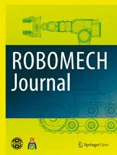
ROBOMECH Journal
Pioneering Discoveries in Robotics and Mechanical EngineeringROBOMECH Journal, published by SpringerNature, is a prominent open-access journal dedicated to the fields of robotics, mechanical engineering, and artificial intelligence. Established in 2014, the journal has quickly established itself as a vital platform for disseminating innovative research in control and optimization, instrumentation, and modeling and simulation, earning a commendable Q2 ranking in Mechanical Engineering and multiple Q3 rankings across other relevant fields in 2023. With a commitment to facilitating accessible knowledge sharing, ROBOMECH Journal promotes cutting-edge research that drives advancements in both theoretical frameworks and practical applications within the robotics community. Scholars, engineers, and professionals seeking to contribute to or stay informed about the latest developments in these dynamic fields will find the journal's rich array of articles invaluable. With its open-access model, all published research is freely available, ensuring wide dissemination and increased visibility for authors, thus fostering collaboration and innovation across disciplines.

JOURNAL OF INTELLIGENT & ROBOTIC SYSTEMS
Unleashing Potential in Robotic TechnologiesJOURNAL OF INTELLIGENT & ROBOTIC SYSTEMS, published by Springer, is a premier interdisciplinary journal that focuses on the rapidly evolving fields of artificial intelligence, robotics, and their applications across various engineering domains. With an impressive impact factor and ranked in the Q1 and Q2 quartiles of multiple relevant categories—including Electrical and Electronic Engineering, Control and Systems Engineering, and Mechanical Engineering—this journal is essential for researchers, industry professionals, and graduate students seeking to stay at the forefront of innovation in intelligent systems. The journal publishes high-quality research articles, reviews, and technical notes that contribute to advancing theory, practice, and the integration of intelligent robotic systems better suited to meet contemporary challenges. Founded in 1988, and with a robust indexing in Scopus, the journal continues to foster scholarly discourse and serves as a critical resource for those passionate about the future of intelligent technologies, despite not currently providing open access options.

Cyborg and Bionic Systems
Unleashing Potential: Bridging AI and Biomedical EngineeringCyborg and Bionic Systems, published by the American Association for the Advancement of Science, stands as a pivotal open access journal that has enriched the academic landscape since its inception in 2020. With an E-ISSN of 2692-7632, this journal focuses on interdisciplinary research that converges on advances in Artificial Intelligence, Biomedical Engineering, Human-Computer Interaction, and Mechanical Engineering. Notably, the journal has attained impressive rankings, securing Q1 status across these categories and exhibiting a commendable Scopus ranking with percentile standouts in each discipline, thus establishing its influence and relevance in the scientific community. Based in Washington, DC, this journal provides a platform for innovative ideas and findings that aim to enhance our understanding of cyborg systems and bionic devices. The open access model ensures that groundbreaking research is readily available to researchers, professionals, and students alike, fostering collaboration and knowledge dissemination within these rapidly evolving fields.
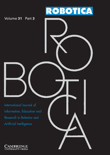
ROBOTICA
Pioneering Discoveries in Multidisciplinary RoboticsROBOTICA is a premier academic journal that serves as a vital resource within the multidisciplinary field of robotics and artificial intelligence. Published by Cambridge University Press, this journal boasts a comprehensive scope that encompasses areas such as computational mechanics, computer vision, control systems, and software applications. With an impressive range of quartile rankings in 2023, including Q2 in key categories like Computational Mechanics and Control and Optimization, ROBOTICA represents a significant contribution to its field, providing researchers and practitioners with cutting-edge insights and advancements. Although it follows a traditional subscription model, the journal maintains a commitment to accessibility through its esteemed indexing performance and robust academic standing, evidenced by Scopus rankings within the top percentiles across multiple relevant disciplines. Covering an expansive period from 1983 to 2024, ROBOTICA is essential for anyone looking to stay at the forefront of robotics research and innovation.
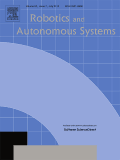
ROBOTICS AND AUTONOMOUS SYSTEMS
Pioneering Research for Tomorrow's Autonomous Systems.ROBOTICS AND AUTONOMOUS SYSTEMS, published by Elsevier, is a leading journal in the fields of robotics and automation, providing a platform for the dissemination of high-quality, peer-reviewed research. With an impressive impact factor and a prestigious reputation, this journal is classified in the Q1 category for major fields including Computer Science Applications, Control and Systems Engineering, Mathematics, and Software as of 2023. The journal boasts an extensive archive dating back to 1988, reflecting the evolution of the discipline and fostering innovative research discussions that are crucial for advancements in autonomous technologies. Researchers, professionals, and students are encouraged to contribute to and benefit from the ongoing dialogue within these dynamic fields. Accessible through various academic resources, ROBOTICS AND AUTONOMOUS SYSTEMS stands as a pivotal information source for those dedicated to exploring the frontiers of intelligent systems.

Annual Review of Control Robotics and Autonomous Systems
Navigating the Evolving Landscape of Autonomous SystemsAnnual Review of Control Robotics and Autonomous Systems, published by ANNUAL REVIEWS, is a premier, peer-reviewed journal dedicated to advancing the field of control, robotics, and autonomous systems. With its E-ISSN of 2573-5144, the journal is recognized for its high-caliber contributions, evidenced by its Q1 ranking in key categories, including Artificial Intelligence, Control and Systems Engineering, and Human-Computer Interaction. Spanning converged years from 2018 to 2024, it serves as an essential resource for researchers, professionals, and students who seek to stay abreast of the latest developments and methodologies impacting these rapidly evolving fields. The journal does not currently offer Open Access options, which enables it to maintain stringent quality control while ensuring that every issue is packed with scholarly articles that meet the highest academic standards. With a focus on interdisciplinary approaches and cutting-edge technologies, the Annual Review of Control Robotics and Autonomous Systems is poised as a critical voice for scholarly discourse, fostering innovation and collaboration in tackling complex challenges of the modern world.

Robotics, published by MDPI in Switzerland, stands at the forefront of interdisciplinary research, focusing on the latest advancements in robotics, artificial intelligence, control systems, and mechanical engineering. As an Open Access journal since 2012, it aims to disseminate high-quality research and innovative findings to a global audience, promoting collaboration among researchers, professionals, and students alike. With a commendable impact reflected in its 2023 categorizations—including Q2 rankings in Artificial Intelligence and Control and Optimization, and a prestigious Q1 in Mechanical Engineering—the journal underscores its significance within the scientific community. Notably, it boasts impressive Scopus rankings, standing within the top 20% in Mathematics and Control and Optimization. Robotics is dedicated to advancing knowledge and practice in the robotics domain, providing readers with valuable insights into emerging trends and technologies that shape the future of the field.

Journal of Field Robotics
Unleashing the Potential of Field Robotics ResearchJournal of Field Robotics, published by WILEY, is an esteemed peer-reviewed journal focusing on the cutting-edge developments in the area of robotics applied to real-world environments. With an ISSN of 1556-4959 and an E-ISSN of 1556-4967, this journal serves as a vital platform for researchers and professionals keen on advancing the fields of Computer Science Applications and Control and Systems Engineering, where it has earned a prestigious Q1 ranking in both categories as of 2023. The journal, which converges in its studies from 2006 to 2024, showcases original research that enhances the understanding and implementation of robotic systems in various fields, thus promoting innovative solutions to complex challenges. Access to the journal is through subscription-based options, ensuring a rigorous selection of high-quality research articles, reviews, and technical notes that contribute significantly to the academic community. With a solid Scopus ranking—39th out of 817 in Computer Science Applications and 17th out of 321 in Control and Systems Engineering, both in the 95th and 94th percentiles respectively—Journal of Field Robotics is essential reading for anyone interested in the future of robotics technologies and their transformative impact.
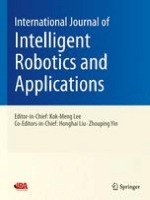
International Journal of Intelligent Robotics and Applications
Exploring the Intersection of Robotics and IntelligenceInternational Journal of Intelligent Robotics and Applications, published by SPRINGER SINGAPORE PTE LTD, is a pivotal platform dedicated to advancing the field of robotics and artificial intelligence. With an ISSN of 2366-5971 and an E-ISSN of 2366-598X, this journal has established its presence since its inception in 2017, showcasing innovative research and applications up until 2024. The journal aims to foster interdisciplinary collaboration by publishing high-quality articles that cover a broad range of topics from foundational AI concepts to cutting-edge robotics technologies. It holds respectable rankings, positioned in the Q3 category of Artificial Intelligence and Q2 category of Computer Science Applications in the 2023 metrics, and is indexed in Scopus with notable rankings in both computer science disciplines. Although it follows a subscription model, the journal remains committed to facilitating access to groundbreaking research for its audience of researchers, professionals, and students, contributing to the ever-evolving landscape of intelligent robotics.